Surprising remnants of railroading's past sometimes manage to survive into the present. In the case of large items, such as depots, the interpretation of past history is relatively simple. In the case of other artifacts, the use may be much less apparent.
Russellville, Arkansas, once had a substantial yard, a large freight depot, a brick and stucco passenger station and, in the steam era, a large coaling tower. The passenger depot survived to be acquired by the City of Russellville and restored, but the ancient wooden freight depot and most other operating artifacts gradually disappeared. Even the Russellville traveling switch engine, which at one time operated two shifts, has now disappeared in the Union Pacific era.
Recently when studying the remaining old buildings in the depot historic district of Russellville, an unusual concrete foundation was noted. Four rails extended a few inches out of the concrete to a point where they were cut off. After documenting the foundation with photographs, research helped identify the prior usage.

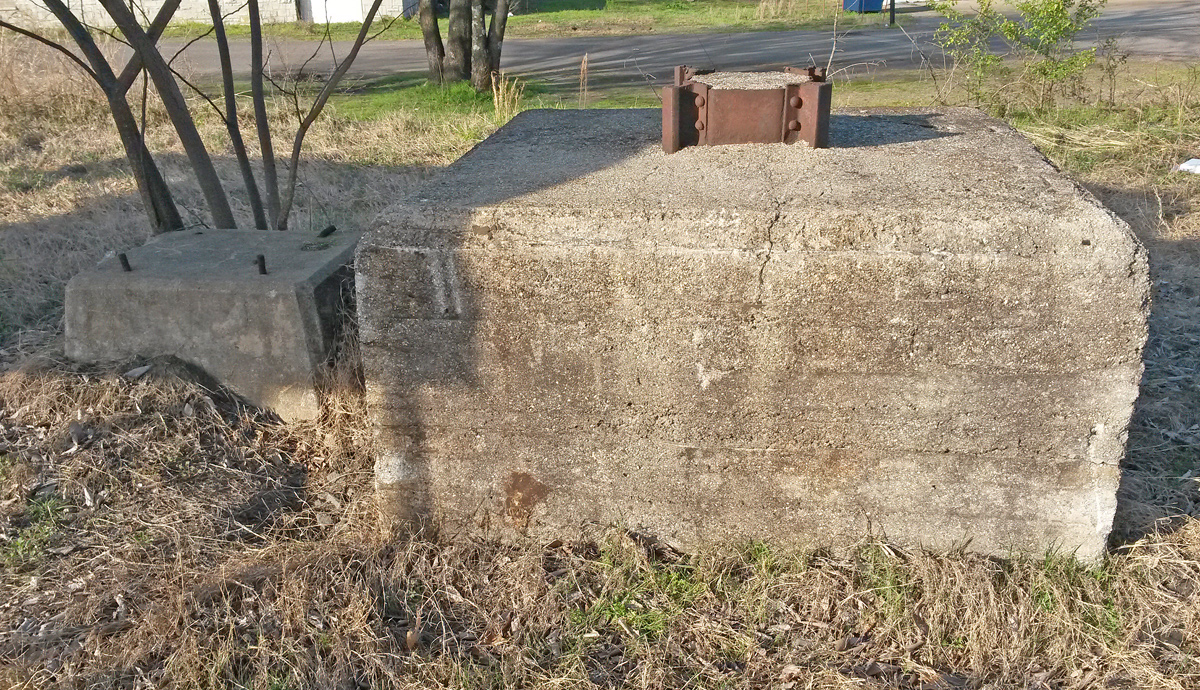

This view in 2020, from the approximate location of the watchman tower, looking west toward the depot and Commerce Avenue crossing, is much different than what the watchman would have seen. At that time, the crossing watchman would have protected 5 tracks, with activity of passenger trains, through freight trains, the local freight, a D&R passenger train and freight train, and frequent passes by the Russellville switch engine.
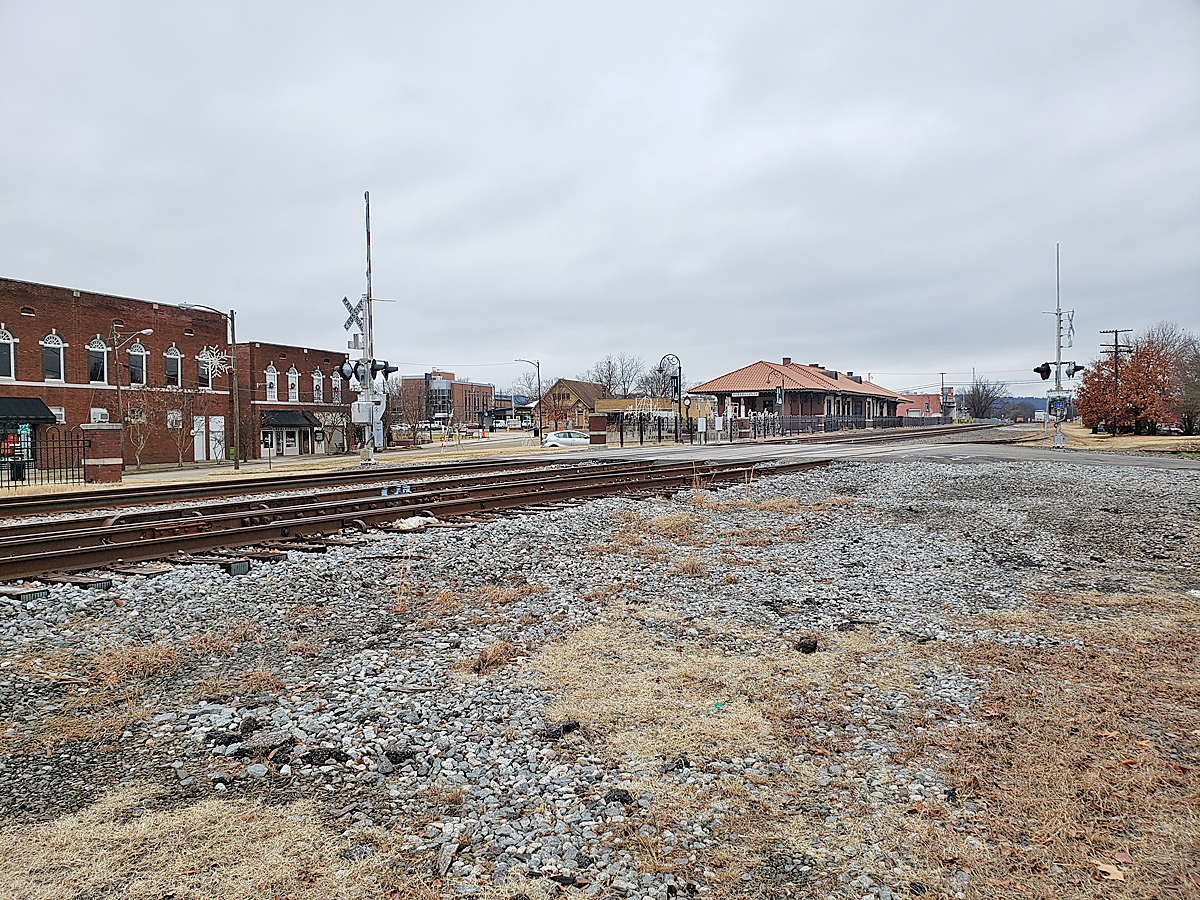
In this 1946 photo, D&R locomotive #10 is pushing combination car #4, moving from the D&R connection to the passenger station as a crewman observes from the rear platform, back-up whistle and air brake close at hand. Note also the unusual crossing warning devices, with high striped posts on each side of the street, and with paired gates which blocked both lanes of the road. At one time. gates at road crossings were lowered and raised manually, rather than being automatically activated by an approaching train. This tower was presumably manned 24/7 so that gates at both Commerce and Arkansas Avenues could be activated as needed for trains and switch engine movements. The date of gate installation at Russellville is not certain, but available valuation maps suggest that they were placed in the early 1920s. Automatic flashing light signals were installed in 1950; those probably allowed the retirement of this tower.
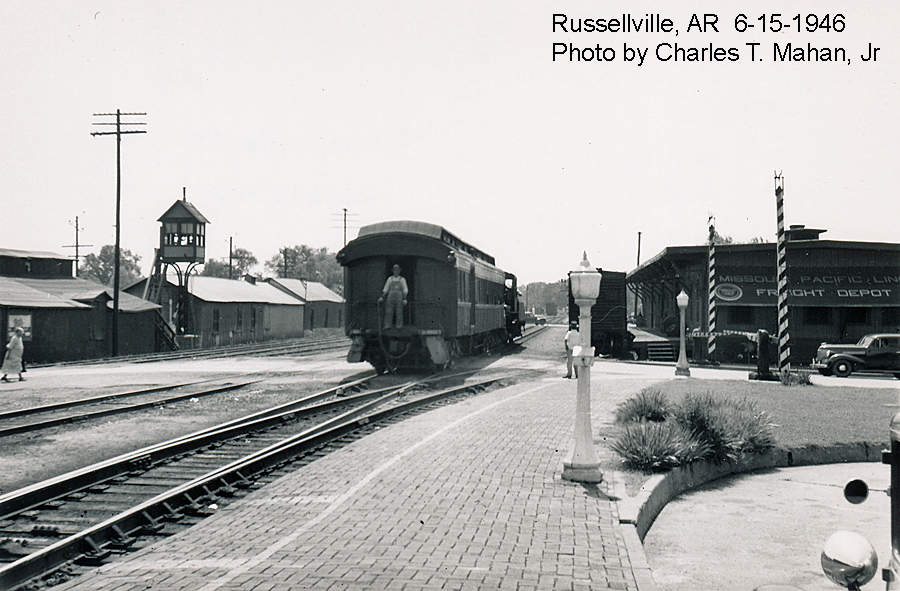
An enlargement of part of the photograph confirms the actual use of this foundation, as the base of a watchman's tower. As can be seen in the photo, the smaller concrete foundation anchored the base of the steps used to access the tower.
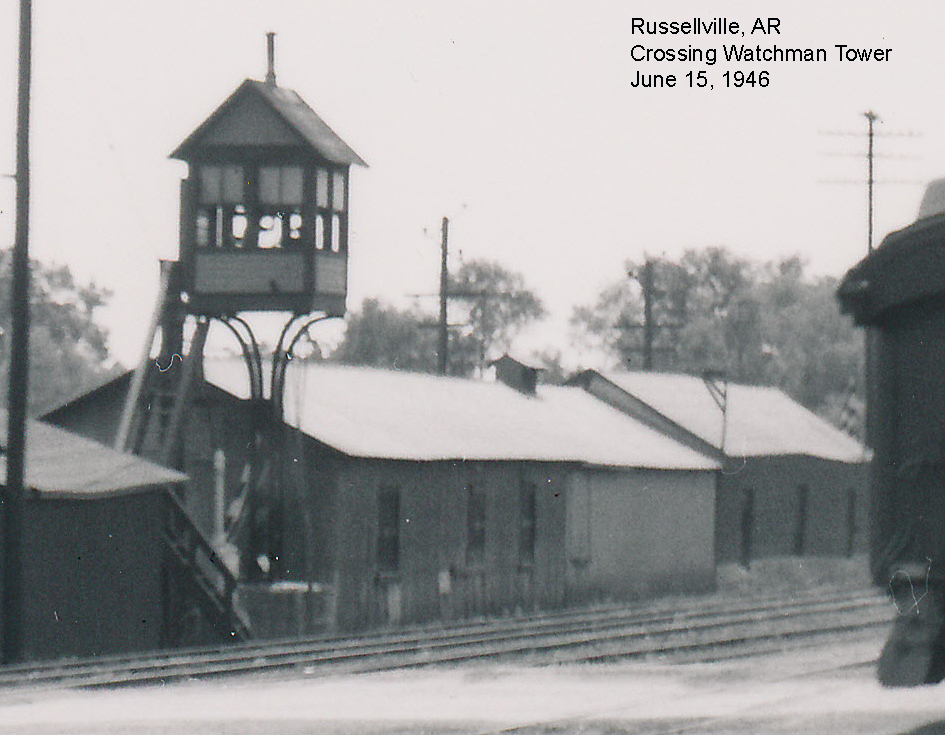
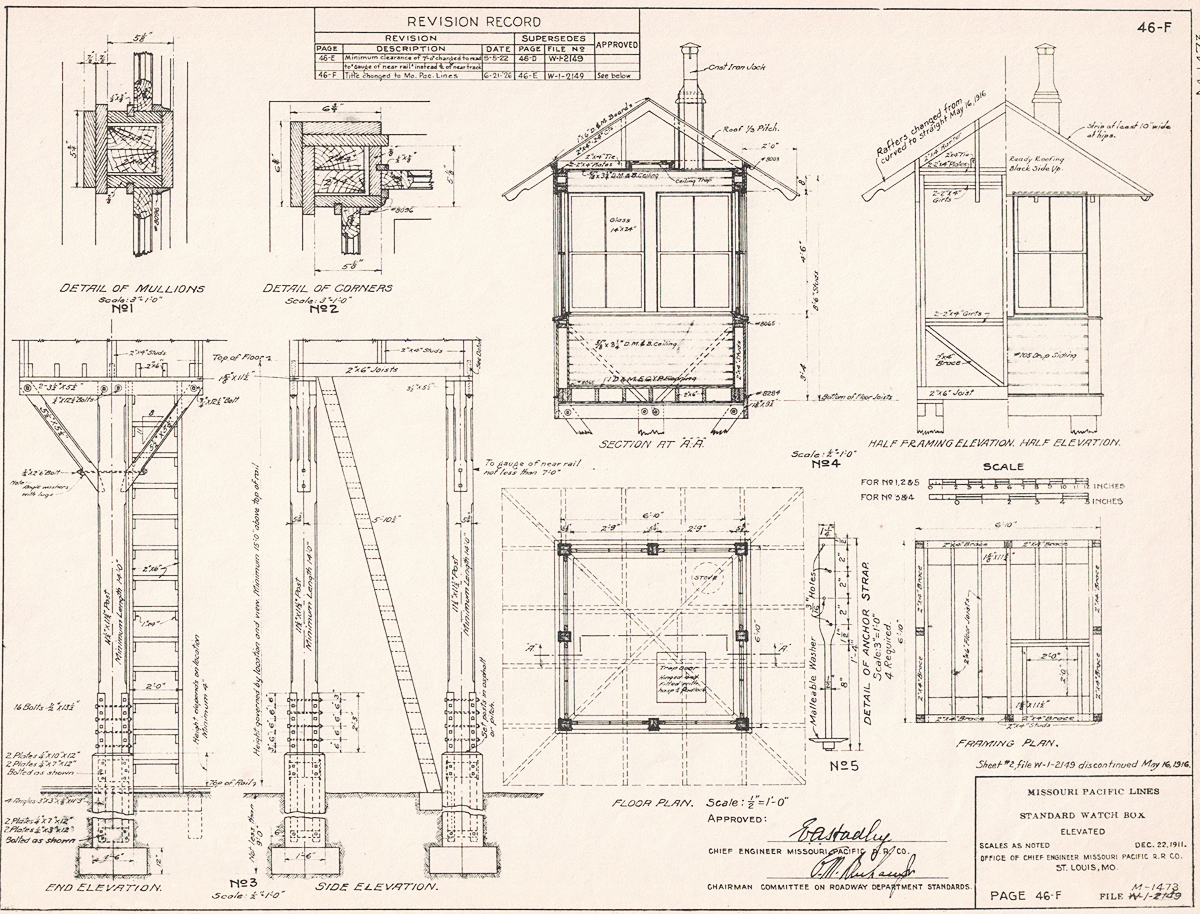
Diagram courtesy of Missouri Pacific Historical Society Digital Archives.
If you are considering making a model of this structure, basic dimensional data for the foundation can be found here.